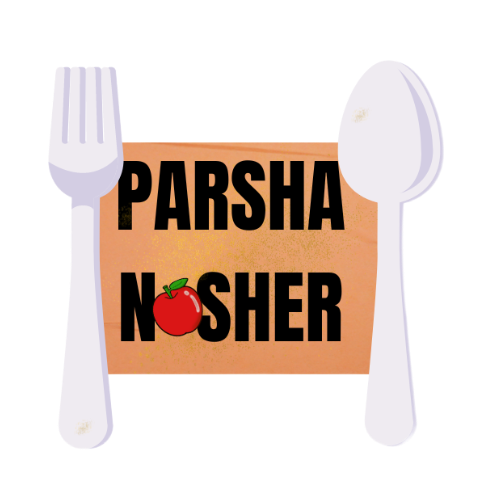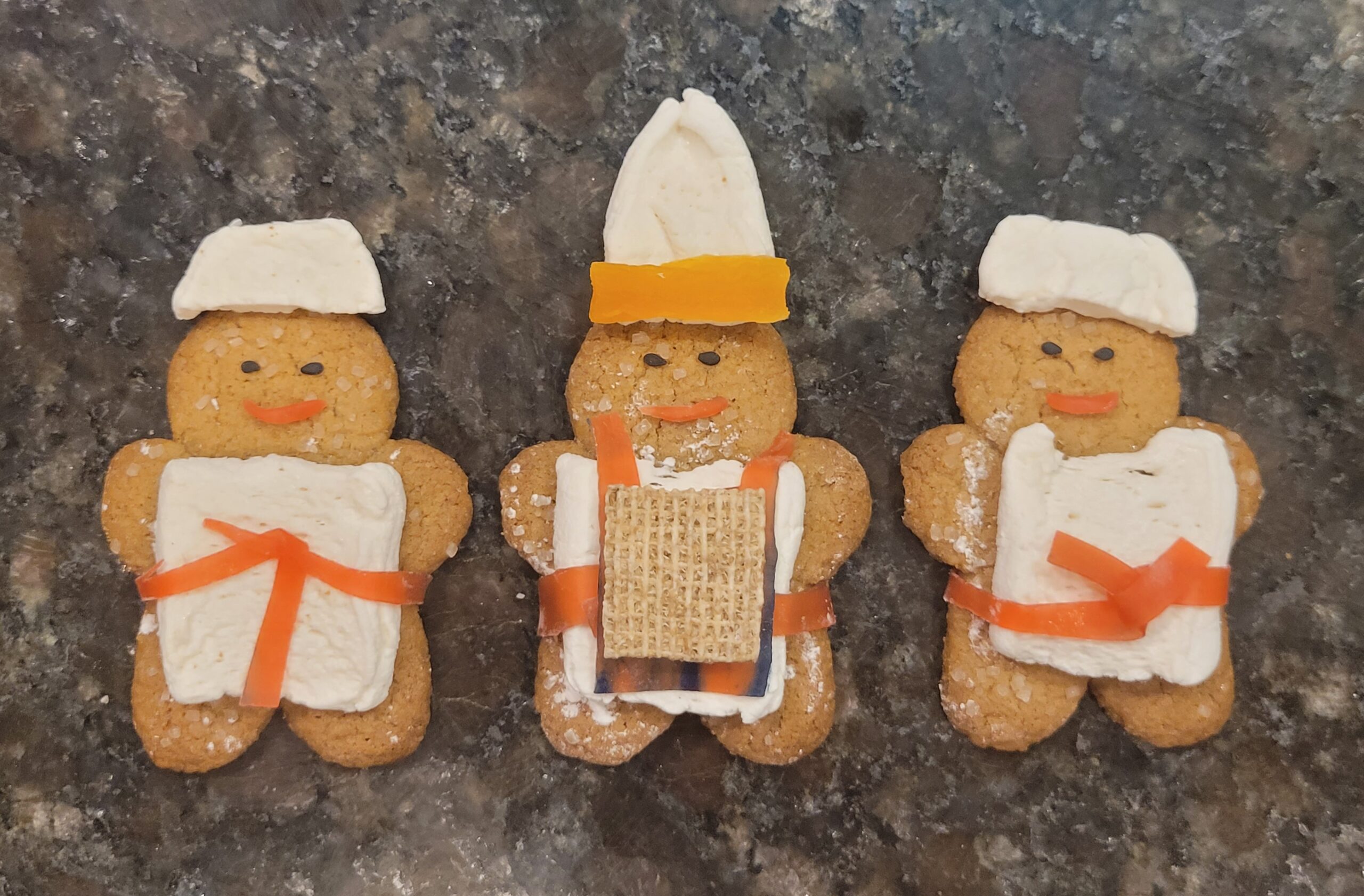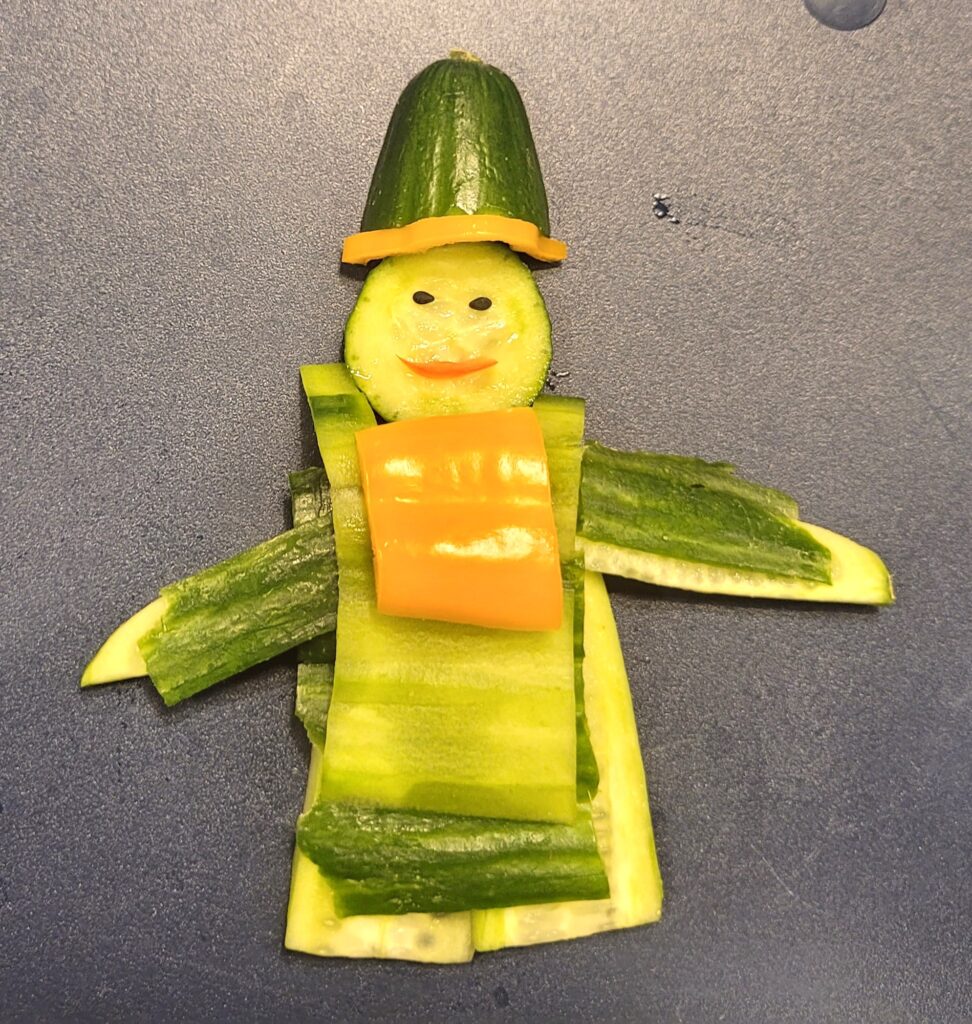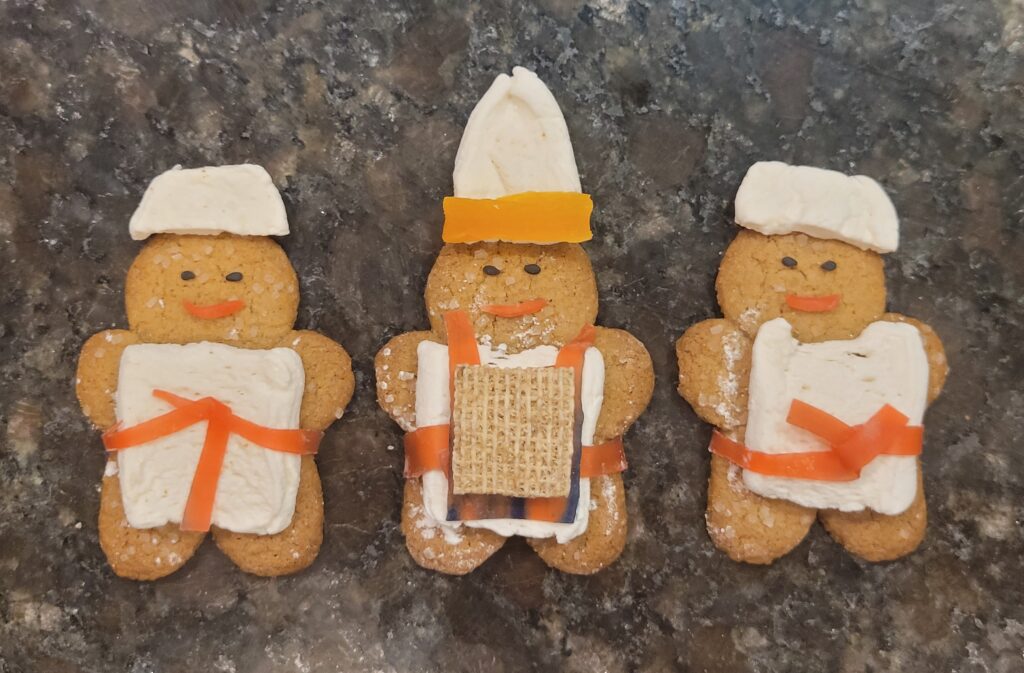| And G-d said to Moses: Order Aharon and his sons as follows: These are the rules (lit: “the Torah”) for the burnt offering, that is the burnt offering that will stay on the alter all night, and shall be kept burning until morning. | Vayedabeir Hashem el Moshe leimor: Tzav et Aharon ve-et banav leimor: Zot torah ha-ola, hi ha-ola al mokda al ha-mizbeach kol halaila ad haboker tukad bo. | וַיְדַבֵּר ה’ אֶל־מֹשֶׁה לֵּאמֹר׃ צַו אֶת־אַהֲרֹן וְאֶת־בָּנָיו לֵאמֹר זֹאת תּוֹרַת הָעֹלָה הִוא הָעֹלָה עַל מוֹקְדָה עַל־הַמִּזְבֵּחַ כׇּל־הַלַּיְלָה עַד־הַבֹּקֶר וְאֵשׁ הַמִּזְבֵּחַ תּוּקַד בּוֹ׃ |
If your home is kosher for Passover when you make this nosh, be sure to make the cucumber version!
Torah Thoughts
Before offering sacrifices on behalf of the Children of Israel, the Kohanim (Aaron and his descendants) had to dress themselves in special garments, with special accessories. The garments emphasized the holiness of the task, and the accessories clarified that the Kohen Gadol (high priest) was acting on behalf of all of the Children of Israel. Thus, a breastplate was worn with stones to represent each tribe (see Parashat Tetzaveh). The Kohen Gadol also had a stone on each shoulder, each inscribed with the names of six of the twelve tribes.





